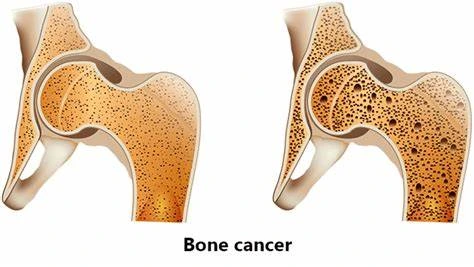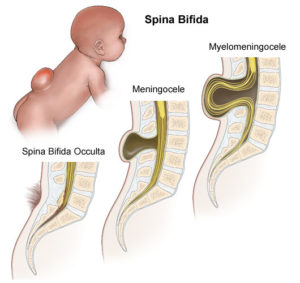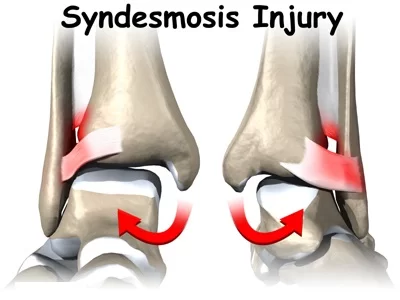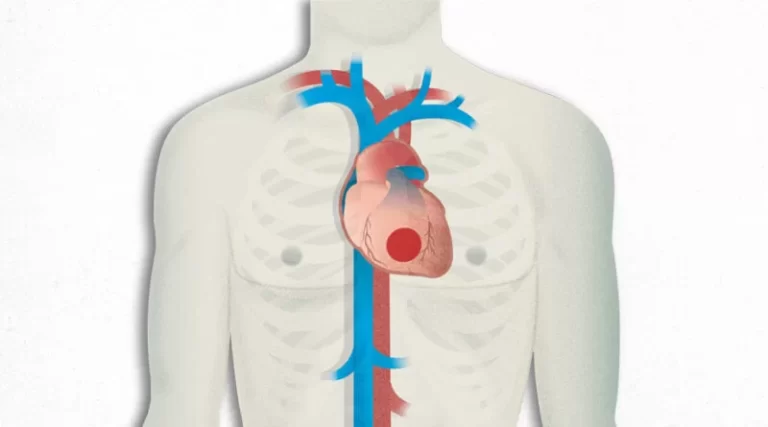Hyperekplexia
What is Hyperekplexia?
Hyperekplexia is a genetic neurological disease. This disease mainly involves infants, and symptoms generally begin to show shortly after birth.
When an infant with hyperekplexia listens to a loud noise, it startles them more than is normally considered typical. They may also have this response to further unexpected stimuli, like sudden motions or touch.
When startled, the infant evolves rigid and cannot move for a short duration. The rigidity can occasionally stop an infant from breathing and, in some circumstances, can be fatal.
An infant with hyperekplexia even has continual hypertonia, which indicates their muscles seem stiff and affect motion. It may show body spasms or eye motion issues.
There are two states of the situation, mild and major. Stress or anxiety may involve the intensity of the startle reaction.
HPX may be called other names, involving:
- Familial startle disease
- Hereditary hyperekplexia
- Startle syndrome
- Stiff-baby syndrome
Symptoms of Hyperekplexia
Besides hypertonia and excessive startle reaction, infants with hyperekplexia may also feel:
arm or leg motions while asleep
hypnagogic myoclonus, which is when a muscle twitches while dropping asleep
a forward extension of the head accompanied by leg, arm, and neck spasms when tapped on the nose
Also, this disease has associations with the following:
raised likelihood of fall or injury
developmental delays, which can involve a child’s performance at school
problems with breathing
abdominal hernias, which is when stress causes a bulge in the lower stomach region
congenital hip dislocation, as an outcome of the ball and socket joint not developing correctly
unsafe walking
In rare circumstances, infants also have epilepsy, resulting in recurrent seizures.
Sudden infant death syndrome (SID) is the leading reason of death in babies between 1 month and 1 year old. Hyperekplexia may account for some issues of SID.
Can hyperekplexia occur in adulthood?
Signs and symptoms of hyperekplexia generally begin to fade when an infant turns 1 year old.
Yet, for some patients, the atypical startle reflex and duration of rigidity can continue throughout their life. The disease may also involve gait (how a person walks) and breathing.
Causes of Hyperekplexia
Hyperekplexia is a genetic disease that happens when mutations happen in precise genes. Genes are made up of DNA and deliver instructions for protein making.
Investigators have discovered connections between hyperekplexia and variants in the subsequent genes:
- ATAD1
- GLRA1
- GLRB
- GPHN
- SLC6A5
These genes play a part in creating proteins seen in neurons (nerve cells) that impact how the cell reacts to glycine. As well as living an amino acid, which connects to form more protein, glycine is a neurotransmitter. A neurotransmitter is a chemical messenger that works on the nervous system.
In healthy people, glycine works to control muscle fiber stimulation. Mutated nerve receptor proteins stop glycine binding, inducing muscles to overreact and further symptoms of hyperekplexia.
If a patient has a mutation in any of the overhead genes, it can decrease the result of glycine in the nervous system. Thus, neurons transmit unregulated signs to the brain and the muscles, generating unintended muscle motions and an exaggerated startle reaction.
A patient may inherit hyperekplexia in an autosomal prevailing or autosomal recessive way.
Autosomal dominant inheritance
This indicates that just one gene replication from one parent requires to have a mutation for the infant to have the disease. The parent with that gene mutation probably has the same disease.
In the above instance, a baby has a 50% probability of inheriting the gene variant and the disease.
Autosomal recessive inheritance
This indicates that both gene copies (one per parent) must have a mutation for the baby to have the disease. If per parent has just one copy of the variant gene, they are both carriers but generally do not have symptoms.
In this instance, the baby has a 25% possibility of inheriting the disease, a 25% probability of inheriting no gene variants, and a 50% probability of evolving into an asymptomatic carrier.
Diagnosis
Doctors or physicians may carry several various diagnostic measures when they suspect that a person may have hyperekplexia. Manifestation of the disease contains the exaggerated startle response, muscle stiffness, and impaired motion after the startle. A doctor or physician may also like to rule out hyperekplexia if a kid is undergoing seizures.
Possible diagnostic steps contain:
Family medical history. The doctor or physician will examine for a family record of the disease since most issues of hyperekplexia are inherited.
Electroencephalography (EEG). This examination calculates the electrical activity of the brain. It can provide doctors or physicians an opinion of what is going on in a person’s brain during the startle response and may be used to judge epilepsy.
Electromyography. This examination calculates electrical activity in the muscles.
Genetic testing. These examinations examine for the gene mutations associated with hyperekplexia.
Misdiagnosing hyperekplexia
Misdiagnosis can be a difficulty in matters of hyperekplexia. For example, one small analysis from 2017 discovered that 13 out of 16 participants had previously obtained an inaccurate diagnosis of epilepsy.
A small, older analysis from 2014 affecting 17 Japanese children discovered that just seven had obtained a proper diagnosis of hyperekplexia before the age of 1 year. Yet, all 17 babies showed the characteristic muscle stiffness and atypical startle reaction soon after birth.
The authors of this analysis emphasize the significance of obtaining an early, proper diagnosis to obtain proper treatment and control accidental injuries.
While diagnosis usually happens in youth, a case statement from 2020 defines the diagnosis of a 63-year-old female. She experienced symptoms involving abnormal, extreme, and involuntary reactions to harmless and incredible sensory inputs, meeting the measures for diagnosing hyperekplexia. Yet, genetic examinations returned normal outcomes.
Treatment of Hyperekplexia
Clonazepam, a tranquilizer in the benzodiazepine family, can manage the symptoms of hyperekplexia. This drug can ease muscle stiffness in involved newborns following the atypical startle reaction. Specialists suggest a daily dose of 0.01 to 0.1 milligrams (mg) per kilogram (kg) for kids and 0.8 mg per day for grown-ups.
Further possible drugs for managing hyperekplexia, which include a range of antianxiety and antispastic medications, contain:
- carbamazepine (Carbatrol)
- clobazam (Onfi)
- phenytoin (Dilantin)
- diazepam (Valium)
- valproate (Depacon)
- 5-hydroxytryptophan
- piracetam
- phenobarbital
Physical and cognitive therapy might assist lessen the fear of falling and enhance walking.
The Vigevano maneuver, which includes bending the head and legs toward the torso, can be lifesaving. This method may assist to control a baby from rotating blue if they quit breathing due to muscle stiffness associated with hyperekplexia.
How Does Hyperekplexia Progress?
Symptoms of hyperekplexia generally enhance in infancy, but some fairly mild symptoms may persist via the majority. Likely long-term effects of the disease contain:
- Tendency to startle efficiently
- Low tolerance for crowds or noisy conditions
- Muscle stiffness
- Twitching or other motions while asleep
- Problem walking or susceptibility to falling down
How Is Hyperekplexia Prevented?
There is no known way to control hyperekplexia. Patient with a family record of the disease is recommended to talk with a genetic counselor to evaluate their risks if they prepare to have kids.
Hyperekplexia Caregiver Tips
Some patient with hyperekplexia also suffers from further brain and mental health-related problems, a disease known as co-morbidity. Here are a few of the diseases that may be associated with hyperekplexia:
Hyperekplexia may be associated with a raised risk of depression.
Patients with hyperekplexia may be at raised risk for anxiety.
FAQ
Is hyperekplexia curable?
Nowadays, there is no treatment for the disease. The drugs that might be used contain anti-anxiety and anti-spastic medications like clonazepam and diazepam, as well as phenobarbital, carbamazepine, and further
How do I know if my infant has hyperekplexia?
Diagnosis of Hereditary hyperekplexia needs the three main components: generalized stiffness instantly after birth, exaggerated startle reflex to unexpected stimuli, and a short duration of generalized stiffness following the startle reaction.
How do you treat hyperekplexia?
If a slowing of the heart rate is generating the symptoms, medications known as anticholinergics (like atropine) may be used. Very high blood pressure requires to be managed fast but carefully because the blood pressure can drop unexpectedly. You may require a pacemaker for an irregular heart rhythm.
Can hyperekplexia go away?
The signs and symptoms of hereditary hyperekplexia normally fade with age. Yet, more senior people with hereditary hyperekplexia may still startle efficiently and have a duration of rigidity, which can induce them to fall. They may also persist to have hypnagogic myoclonus or motions during sleep.
Do I have hyperekplexia?
Diagnosis of Hereditary hyperekplexia needs the three main components: generalized stiffness instantly after birth, exaggerated startle reflex to random stimuli, and a short duration of generalized stiffness following the startle reaction.







